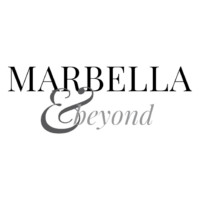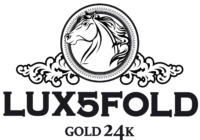March 28, 2022
The Different Types of Leather: A Complete Buyers Guide
Did you know there is more than one type of leather? Footwear will often come from a different type of leather than what’s used in furniture or clothing. Knowing the difference between the different types of leather ensures you get the right one for your project.
To give you an understanding of the different leather types, here’s a complete buyer’s guide.
Types of Leather
Leather is classified in several ways, so for clarity, this guide uses the tanning process for category reference.
Chrome Tanned Leather
It’s the most common type of leather used. The tanning process binds collage and chromium while increasing protein space. The process creates leather that is shrink-resistant, stretchable, and found in a variety of products.
Vegetable Tanned Leather
When you want strong, durable, stiff leather, go for the vegetable tanning process. Men’s leather briefcases, suitcases, saddles, and belts are a few items commonly made using vegetable-tanned leather. The tanning process uses bark and plants to create brownish-yellow leather. The well-known brand Carl Friedrick, for example, makes stunning, durable and extremely high-quality leather briefcases for men, wallets, suitcases and more accessories from vegetable-tanned leather.
Calfskin Leather
Made from juvenile cows, people often use calfskin leather in footwear. It is soft, smooth, and pliable, making it easy to work with.
Sheepskin
Sheepskin accounts for a large portion of global leather production. You can typically find it in cold-weather boots, shoes, jackets, and all-weather upholstery. One side of the hide is leather, while the other retains the wool keeping you warm and naturally wicking moisture away.
Shell Cordovan
Cordovan leather is normally used to make small products like gloves and shoes. Unlike calf leather which comes in larger pieces, shell cordovan is only made from the butt of horses. It’s naturally smaller than some other types of popular leather.
Exotic Leathers
Leather that comes from other animals is known as exotic. Some common types of exotic leathers include snake, alligator, moose, frog, camel, and kangaroo. The types of items depend on the animal’s size, but most are personal items like belts, wallets, and shoes.
Shiny Leather
The shiny appearance comes from the vinyl or polyurethane layer on top of the leather. It’s often used for clothing and furniture. Known as PU/Bicast leather, it’s less expensive than full-grain pieces.
Vegan/Faux Leather
The synthetic leather often looks and smells like the real thing. Typically made from plastic, it’s used in a variety of items that include clothing, belts, shoes, and upholstery.
Here you learn more about what vegan or faux leather is and how it’s made.
Leather Grains
Leather grades have to do with the grain, which also affects quality and price. Where the leather is cut from the hide signifies the grain. The grain also determines the leather’s best uses.
Full Grain Leather
Full-grain leather is not buffed or sanded; only the hairs are removed. It is a strong and durable leather often used in saddlery, shoes, and furniture. It has water-resistant properties and develops an attractive patina, but the lack of buffing can leave surface blemishes. Full-grain leather is the most expensive and highest quality leather.
Top Grain Leather
Top grain leather is similar to full-grain, except it undergoes a sanding and buffing process on the top layer. It makes the leather softer and more supple, and it’s often used in luxury goods. The downside to its softness is it lacks some of the durability you get with full-grain leather.
Corrected Leather
Genuine or corrected leather is treated to give it a uniform appearance and then buffed and sanded. The leather can be stamped or painted, but these processes also weaken the hide. Genuine leather is commonly used for purses, shoes, belts, and other personal items.
Split Grain Leather
Split grain leather is lower in quality. It’s made from the lower hide layers and doesn’t have the durability or strength as other grains of leather. Split grain material has a thinner and looser surface, making it easy to use with different types of leather.
Reconstituted or Bonded Leather
Bonded leather is exceptionally versatile and less expensive than other types. Unlike most leathers made from a single hide, reconstituted leather can have a little bit of everything.
Unused leather scraps are shredded and bonded into a single piece with latex or polyurethane. The amount of leather in a product can vary between 10% and 90%, depending on the manufacturer and product. Bonded leather is often painted or embossed.
Knowing the differences between each type of leather and the grains makes it easy to choose the correct hide for a project. Shoppers will also know if they are buying a quality item or one made from leather ill-suited for the purpose.






